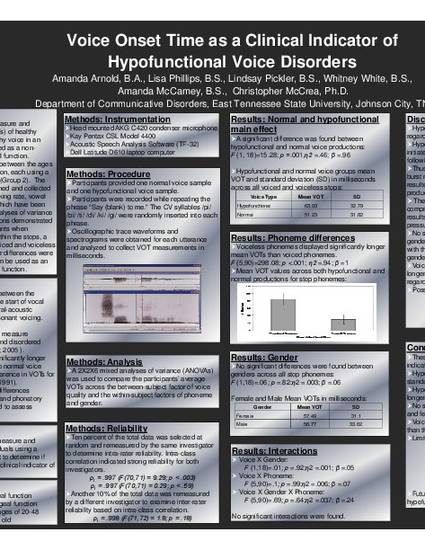
The purpose of this study was to measure and compare the voice onset times (VOTs) of healthy individuals using a normal and breathy voice in an effort to determine if VOT can be used as a noninvasive clinical indicator of laryngeal function. Recordings were made of 20 adults between the ages of 20-48 with normal laryngeal function, each using a normal (Group 1) and breathy voice (Group 2). The participants’ productions were designed and collected in such a manner to control for speaking rate, vowel context, pitch, and loudness; all of which have been shown to influence VOT. A mixed analyses of variance showed that hypofunctional productions demonstrated longer VOTs across all stop consonants when compared to normal productions. Within the stops, a significant difference between the voiced and voiceless stops was noted, although no gender differences were found. It was concluded that VOT can be used as an indirect clinical indicator of laryngeal function.
Available at: http://works.bepress.com/lindsay-greer/4/

This document is the intellectual property of the author(s). It was originally published by the American Speech-Language-Hearing Association Annual Convention.